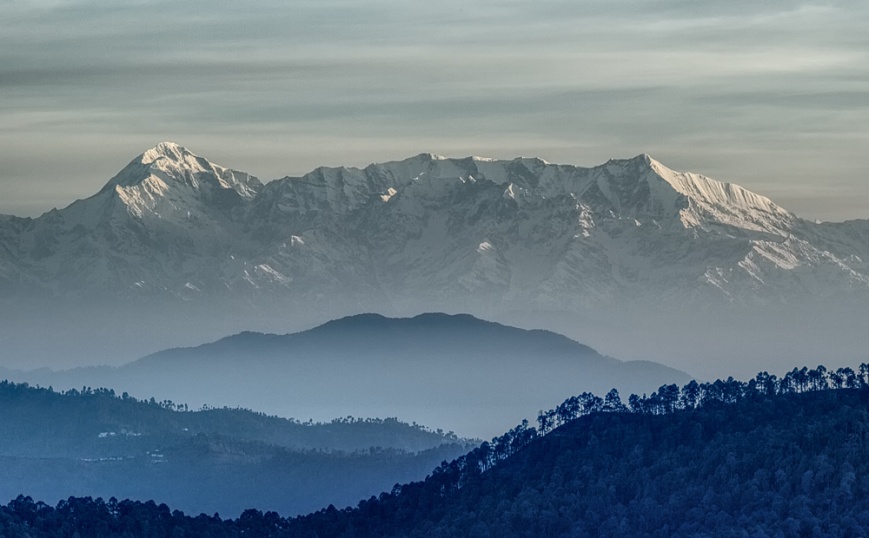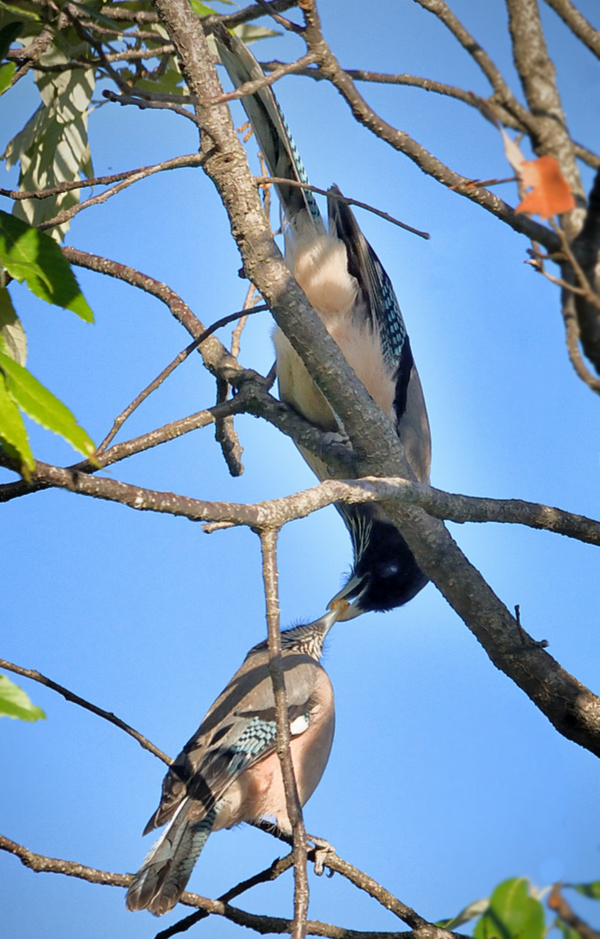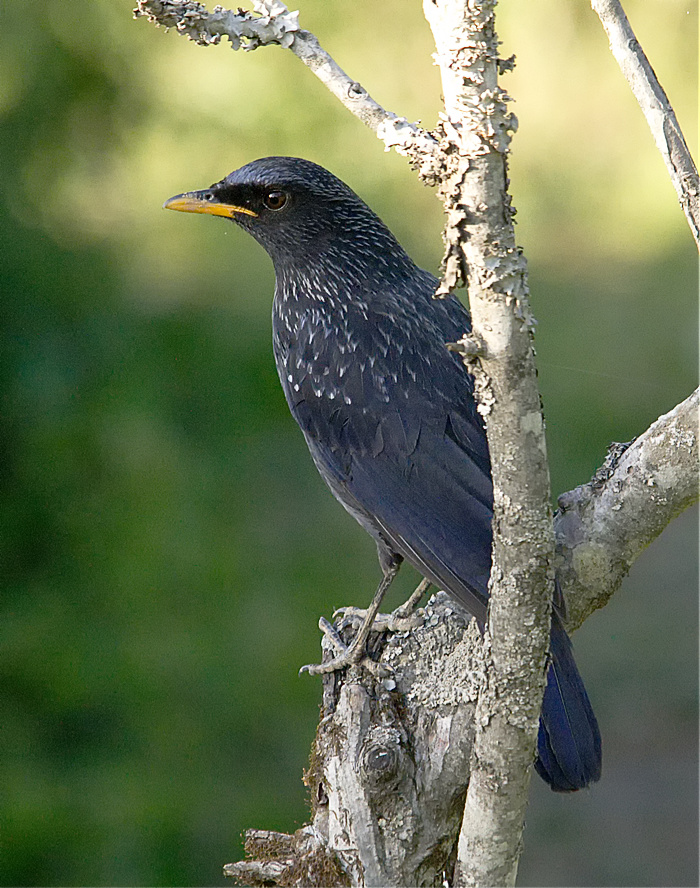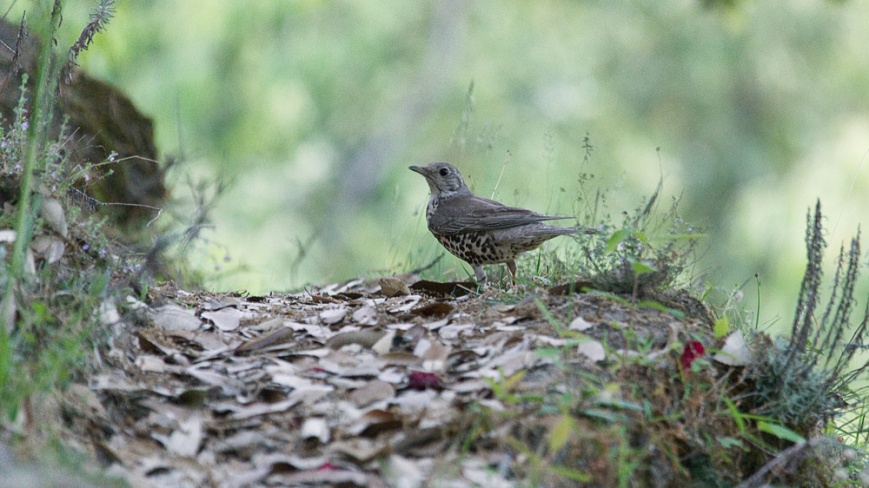Hot summer season and lazy sunny days… a perfect hint to take rest in the lap of nature, on the hills. On the last weekend, that’s what I did. With a couple of friends, we planned on staying at our cottages in Natadol (Maini’s Hill Cottages). The evening passed quickly in the company of friends, chatting, while sitting under the starlight. For the next morning, we planned on a nature walk along with our resident nature guide. It was hard to sleep at night in the expectation of early morning walk. When the first rays of light hit the snow-peaks, I was up and ready with my camera.

(Morning light on snow peaks – It is very rare to see the peaks in summers, due to direction of sun and atmospheric haze. We were lucky! Captured on Nikon Df with Zeiss 135mm lens at f/5.6 and 1/640 shutter speed, at ISO 100)
My both the friends were also ready and enjoying a quick tea, while I photographed the peaks. Soon, our local friend, the nature guide joined us. He, being born and brought up in the region, knows the forest inside out. A mowgli in true sense!
We started of on our trek. I carried only a Sigma 150-500 lens mounted on a Nikon body. This is not a very sharp lens but serves its purpose nicely. After a very short walk, we reached the point on the road, from where we could venture in into the jungle. There are two dogs that sometimes act as night guards at the cottages. Even these accompanied us till the edge of the jungle. It was fun to watch them sniffing one chamomile and then the other, that lined the roadside.
Quietly treading on in, into the jungle, we followed one after the other. The only sound we could hear were of the wind rustling up the dry leaves, bird-songs and the twigs crackling under our feet. Once in a while someone would utter a ‘wow’ or ‘super’, which was unavoidable due to the beauty that we were witnessing.

(Himalayan Bulbuls with their characteristic yellow vent. Nikon Df with Sigma 150-500 lens at f/11 and 1/1000 second… ISO 3200! God bless technology for letting me use such high ISOs.)
The first song that we heard up close was something that reminded me of ‘tea for two’. There were two pairs of Himalayan Bulbuls singing ‘Tea for two, tea for two’ in unison. Bulbuls, Jays and Magpies are three of the easiest birds to spot in the region, apart from sparrows, swallows and turtle doves.
While we were watching the bulbuls, a black-headed jay flew by, over our heads and then another one. Was one of them feeding the other one? Is it natural for them? I have seen magpies also do this. We had no idea but were eager to learn. Our field-guidebook however was quite limited. It just had plates of bird sketches but nothing about their habits. Still we were happy to be carrying a book that helped us identity many other birds.
Far away there was another tiny bird in white and black but we could not identify it. Lesson learnt – carry binoculars next time. Camera with a long tele is not always useful while birding. Maybe, I will buy a sharp and fast long tele lens sometimes soon? Maybe not, especially after my new year resolution (Cup of Chai & the Sparrow).

(Two Black-headed Jays – feeding each other?)
The sun was now shining bright but the wind was still cold. Sunlight barely reached the forest and the amount that reached was filtered by the tree canopies. It felt pleasant walking there, listening to the sounds of the forest. We kept to the forest-trails.
One of my friends spotted a beautiful wood-pecker. It landed on a pine and immediately got to its job. Tapping out the music…tap tap tap. The skill and speed at which it drilled out the tree was amazing. Watching the woodpecker at its work, I forgot to capture its photographs. Such is the magic of nature! When someone in the group, was it the guide, I can’t recall, reminded me to capture the photograph, the woodpecker flew away. A beautiful shot missed but much more beautiful memory was created.
We walked further on and saw tree-climbers, some bee-eaters, shrikes and some birds which I am still trying to identify. Our nature guide told us to stand still and to be quiet. He had spotted a large deer deep inside the forest, but it ran away. Quite a variety of animals also visit the forest from time to time. He said that deers, foxes, martens and rabbits were quite common. Wild boars were common but not seen during the day time on these trails. Leopards? They don’t venture out in daylight when there is a group like ours.

(A Blue Whistling Thrush. It sang a very melodious song, which I enjoyed a lot.)
There was a little white and grey bird which hung upside down on the tree while carrying its meal in its beak. The light was bad for a photograph but I still photographed it just for the records. Sometimes it is good to photograph just for this purpose.
Another little bird had a Dalmatian like tummy (is it called belly by birders?). All covered up with spots. It was a curious though a cautious one. For a long part of the trail, the little friend of ours kept leading us on the track. However, never letting us get close enough to intrude in its comfort zone. A very pretty little bird !

(The spotted bird, which was later identified as Mistle Thrush, that kept its distance but still kept on watching us with a very suspicious eye.)
A little ahead, we saw a Drongo in its nest. It rested there and then flew away. Once again it came back and rested there. When it kept on doing so, our nature guide explained us that there are two of them, a pair. There are newborns in the nest and so they are taking turns at feeding them.
We heard a few more beautiful songs. Some birds we could now identify from their calls but most of the bird-songs were simply beautiful pieces of music to our ears. A bright blue bird, perched on top of a distant tall tree, sang out a high pitched song. The verditer flycatcher is also quite common in the region.

More than two hours had passed since we started on out trek in Natadol. We started on our way back to the road. Further ahead, we could see some more magpies and bulbuls. The return was from a different forest-trail. We reached the road-side, which was some distance away from the spot where we had entered the forest area. This return route was an unplanned on. Interestingly, the two guard dogs were waiting there for us. Did they know that we were planning to emerge on that spot or was it just a coincidence?
The morning trek was wonderful. The songs of birds, cool breeze that sometimes turned up its temper, the sound of dry leaves and twigs crackling under our feet, refreshing smell of the still moist earth and the occasional wild flowers. It was a trek through paradise.
We returned back to the cottages and were in for a pleasant surprise. The bright sunlight was there in the garden too. Magpies, swallows, sparrows and bulbuls were chirping all around. A flock of swallows came and rested on the railing near the deck. In Natadol, it is considered a sign of good luck when they come and build nests in a house.

A beautiful morning indeed! The photographs are not upto the mark since this was more of a nature walk rather than dedicated bird-photography photo-walk.
To both my friends on the trek and the guide – I look forward to many more such nature treks in future. I hope we meet again sometime soon.
Further Reading:
Birding & Bird Photography
Birds of Natadol (opens in a new tab)

Great post 😃
LikeLike
nice pictures
LikeLike
Whenever I “revise” this article – yep it makes me feel that good , I can picture myself wandering through the forest area of Natadol listening to the sounds of nature and going click click with my camera , keeping a sharp ear out for any sound by wild animals- a mountain bear or a tiger (don’t know if they exist or not) and my tummy yearning for the sumptuous breakfast awaiting me back at the Maini’s Hill cottages.Yes this article definitely makes me happy.Thanks Dr Shivam.
LikeLike